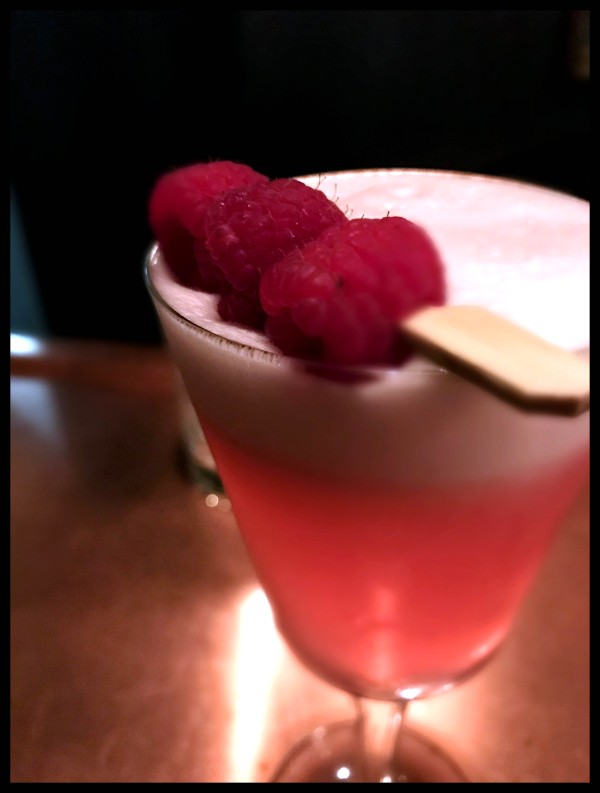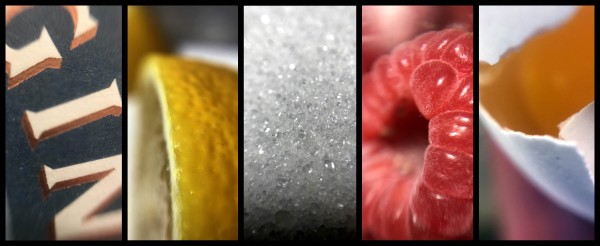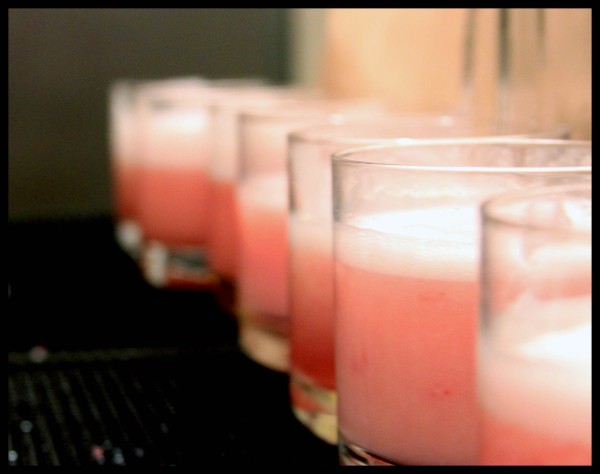Note: an earlier and much more concise version of this article appears at Robb Report.

The Mint Julep doesn’t give a damn about the rules. That much is clear to just about everybody. As a cocktail, it violates almost almost every drinking norm we have, so easily spanning apparent contradictions so as to make the impossible possible.
Take a moment to consider its achievements:
It evokes a sense of 200 years of Southern history that is almost impossibly sanitized, and no one seems to mind. It is essentially a large cup of whiskey, and yet has been embraced by every strata of society as perfectly acceptable to have several on a Saturday afternoon. It is simultaneously exuberant and genteel, a sign of a great party and yet deeply serious, and has found favor in everyone from Teddy Roosevelt to Margaret Mitchell. The same jaded bartender who rolls his eyes at your request for a copper Moscow Mule mug will not only accept but insist on a traditional pewter cup for your Mint Julep.
The Kentucky Derby without the Juleps would be shorter than a commercial break, and just as skippable (I can’t be alone here). But add in Mint Juleps? Suddenly it’s a multi-day event, and the thought of dressing up like a carnival barker from the 1930s seems necessary. Important even. It’s about tradition.
History:
“Somebody somewhere was kidding,” writes David Wondrich, in his magesterial Imbibe!. “A ‘julep,’ you see, was medicine, pure and simple, and always had been.” From the Persian “gulab” — literally “rose water” — the word exclusively referred to sweetened medicinal liquid for some 300 years. It travels from medicine cabinet to liquor cabinet by way of an English novel called Tom Jones in 1749, wherein a character describes a bottle of wine, jokingly, as a “medicinal julap.” It is similar, Wondrich points out drolly, as referring to a bong hit as “glaucoma medicine.”
The burgeoning ice trade, started in New England in 1806, was by the 1810s shipping ice down south year round, and that’s all the drink needed to really take off. Juleps — the cocktail kind, with mint — quickly took root in Virginia, and soon were nationally embraced, the “first true American drink.” Like so many cocktails in the 1800s, early ones would’ve been with Cognac, or the less expensive rum. It wasn’t until the last few decades of the century, those of whiskey’s ascendant quality and Cognac’s struggling production, that whiskey slid into the starring role, where it quite rightly remains.
Mint Julep’s specific attachment to the South is less clear. It was popular all across the country in its day, and it’s “day” was almost 100 years. It drifted out of style in the early 1900s, and anyway, Prohibition came along in 1919 and so thoroughly obliterated drinking culture that it would take us 80 years to even start to get it back.
In any case, it’s easy to imagine that the Mint Julep never really lost a foothold in the South. As medicine, it is a particularly effective palliative against the kinds of paper-wrinkling humidity and weapons-grade mosquitoes that attend Southern summers. It was named the official drink of the Kentucky Derby in 1938 (just 5 years after Prohibition was repealed), and has since become so enmeshed with the event that one intrinsically suggests the other, like turkey and Thanksgiving, or Taco Bell and gastric distress.
What’s the Best Recipe for a Mint Julep?
Old Forester is the official bourbon for the Kentucky Derby much in the way Dannon is the official yogurt of the NFL, which is to say, corporate bullshit that should be summarily ignored. Old Forester isn’t bad — very few bourbons are bad, here — but for this drink I personally prefer one on the sweeter, as opposed to spicier, end of the spectrum. Too much rye spice in the bourbon seems to fight with the mint, particularly on the finish.
Full conclusions below, but first, the best Mint Julep:

Mint Julep
2.5oz Four Roses Small Batch Bourbon
0.5oz – 0.75oz simple syrup (to taste)
10-12 mint leaves
In a metal cup, gently muddle the mint into the simple syrup. Add bourbon, and fill ⅔ with crushed ice. Stir to chill, until a frost forms on the outside. Then pack the rest of the cup with ice. Take 2 or 3 mint crowns, lightly bruise them with your fingers, and stick them against the inside close to the straw. Enjoy.
INGREDIENT NOTES:
Sugar: SIMPLE SYRUP with WHITE SUGAR
For ease and precision, make a simple syrup. Equal parts sugar and water, and stir. Hot water will dissolve the sugar faster, but it’s not necessary. It’ll keep for a month in the fridge and couldn’t be easier. It’s literally the simplest syrup.
Use plain white sugar. Demerara syrup and muscovado sugars are less refined, with darker, richer, more molasses-like flavors, but you get as much as you could ever want of that kind of thing from the bourbon itself. Mint is a piccolo — it’s bright and light and delicate, and the darker sugars blunt its effect.
 Mint: SPEARMINT
Mint: SPEARMINT
About 10-12 leaves of mint, reserving 1 (or ideally 2+ crowns) for garnish. Pretty much every reputable recipe on the internet will admonish you to gently muddle the mint, warning that over muddling will release bitter chlorophyll into the drink. This is sound advice, but honestly, the warnings get a little hysterical.
I tried 3, side by side. The first, I barely tapped. The second, gently pressed, and the third, I pounded that shit like I was forging a sword. I crushed it into a wet pile of dark green shreds. And yeah, a light press on the mint will release brighter flavors, but the over-muddled one was still good — too loud and unsubtle, maybe, “a little toothpasty” my notes say — but not bad, and certainly not bitter.

Aim for about as much pressure than it would take to crush a ripe raspberry. The goal is clarity, not volume. If you want the mint louder, add more of it. Though be advised — as I mentioned in the mojito trials, double mint does not double your delightment. You can easily overdo it with the mint. 10-12 leaves is solid.
Ice: CRUSHED ICE
Crushed ice is pretty important here. Mint Juleps taste best when they’re ice cold and well-diluted.
 There are a few ways to do this: professionals use a dedicated Ice Mallet and a canvas sack called a Lewis Bag to hammer ice to order, which is surprisingly effective and you can find for around $30 online. A clean dish towel and a rolling pin provide similar, if less elegant, services. Pulsing in a blender or food processor works as well.
There are a few ways to do this: professionals use a dedicated Ice Mallet and a canvas sack called a Lewis Bag to hammer ice to order, which is surprisingly effective and you can find for around $30 online. A clean dish towel and a rolling pin provide similar, if less elegant, services. Pulsing in a blender or food processor works as well.
If you’d prefer to avoid violence entirely, you can (1) likely buy it at a local ice company, or (2) every Sonic Drive-In restaurant in the country sells 10lb bags of pebble ice for something like $2. I’m assuming most towns in America have access either to an ice company or to a Sonic or, unlikely, both.
Vessel: METAL CUP
A traditional julep cup is Pewter or Silver, and about 12-16oz. They’re fun and inspirational in their own right (catching a glimpse of one in a cupboard is often sufficient prodding to turn any day into a Julep day), but all that really matters is that it’s made of metal, which conducts the way you need it to.
The smaller base of a cocktail shaker works just fine, as long as it’s not too big. If you must use glass, put it in the freezer for 10min before making the drink. As far as Juleps are concerned, cold is an ingredient.
Bourbon: FOUR ROSES SMALL BATCH BOURBON
Four Roses Small Batch cozies up perfectly to the mint, perfectly mentholating the sweet richness of the bourbon. Too much agreeability can actually make Mint Juleps flat and a little dull, and Four Roses Small Batch had just enough depth and complexity to keep interest but with no tension, no spikes, no fights. 45% alcohol seems to be the sweet spot. Smooth without being boring. Works as well as I can imagine.

Individual Bourbon Details (with ABV%)
*note on method: every bourbon was blind tasted at least twice, usually 4 or 5 times, across 9 rounds. The sole exception to this is Templeton Rye, which was only tasted once because I knew it didn’t belong and I threw it in just to make sure.
MY FAVORITE:
Four Roses Small Batch (45%). Like it was made for it. There might be something better out there but it’s honestly hard to picture, as this feels like the ideal balance between having its own character and agreeing with the overall cocktail.
TOP TIER, WOULD HAPPILY ACCEPT ANY TIME EVER
Buffalo Trace (45%): An excellent all-rounder, really complements the cocktail, but there’s a small bitterness on the finish. Still — this almost won, until I tried it next to Four Roses Small Batch, which took the day each of the 3 times they competed.
Four Roses Single Barrel (50%): not just 5 points hotter than the Small Batch but also a different mashbill, a whole different product. Proof offers a surprising richness here — brown sugar, butterscotch, midpalate like a minted Werthers. Gets a little prickly on the finish but it’s delicious, if perhaps a touch intense for an already intense daytime drink.
Woodford Reserve (45.2%): Very mild. Perhaps too mild. This also perfectly conforms to the figure of the cocktail, but almost too well; so mild it borders on flat. I wanted more flavor. I could see someone thinking this was best, though. “Smooth and soft like baby butt.”

GOOD, BUT WOULD PREFER ONE OF THE ABOVE
Maker’s Mark (45%): Well rounded. Soft. Arcs like a scared cat — front too soft, midpalate oak rises fast and dries it all out, and finishes soft. Less compelling than I want it to be. “Something very dry up front, a flavor that travels concurrently with the cocktail.” Perhaps the wheat, because that happened with Larceny, too. Not unpleasant but not ideal.
Bulleit Bourbon (45%): This would be I think most similar to Old Forester — nice tertiary flavors, and some cool fruit, but spice rises up assertive in the midpalate. Huge fans of Bulleit might appreciate that here — to me, the peppery spice isn’t bad but it doesn’t do the drink any favors. Works against purposes with the mint.
Basil Hayden (40%): Similar problem to Bulleit (above), too much rye fighting with the drink. Flavor is cool but the effect is not.
GOOD BUT TOO HOT
Maker’s Mark Cask Strength (56.7%): Good. Boozy. A little too boozy. After a few minutes the dilution fixes this, bringing out some really cool stone-fruit notes, but it takes a bit. “Finish, while long, is not 100% pleasant.”Overall tasty, but this isn’t what I’d reach for. The Mint Julep, as a drink, doesn’t want for booziness. Keep it 50% or under.
DON’T RECOMMEND FOR THIS APPLICATION
Larceny (46%): Weird front palate and weird finish. This is wheated, like Maker’s Mark, so I expected it to soft and mild, but it’s not: there’s, again, a weird graininess that seems to run concurrently to the flavors of the cocktail and never integrate, which on the finish mutates from weird to straight-up bad.
Maker’s Mark 46 (47%) and Jim Beam Double Oak (43%): Both of these products are finished with more wood — Maker’s 46 with toasted French oak staves and Jim Beam in a whole other barrel — and a rule I found for Mint Juleps is that too much oak actively works against the mint, much in the same way darker sugars did.
Templeton Rye (40%): Tried MGP rye on a lark. Not as bad as I thought it would be, but definitely weird. Sweet vanilla, like cake batter. Tastes like Mint Julep fan fiction or something. No, this is a bourbon drink.
Now make one, and tell me how it is. Cheers.

Trivia
The evolution of the word “julep” is a showcase of just how many different ways the same five-letter word can be spelled in 1000 years — in reading I’ve seen, variously: gulāb, gulap, iulip, julip, julap, julab, and the utterly nonsensical but still somehow offensive “jewlip.”






 There are a few ways to do this: professionals use a dedicated Ice Mallet and a canvas sack called a Lewis Bag to hammer ice to order, which is surprisingly effective and you can find for around $30 online. A clean dish towel and a rolling pin provide similar, if less elegant, services. Pulsing in a blender or food processor works as well.
There are a few ways to do this: professionals use a dedicated Ice Mallet and a canvas sack called a Lewis Bag to hammer ice to order, which is surprisingly effective and you can find for around $30 online. A clean dish towel and a rolling pin provide similar, if less elegant, services. Pulsing in a blender or food processor works as well.








![[bi] initial](https://drinksanddrinking.files.wordpress.com/2016/09/bi-initial.jpg?w=600)
![[bi]two weeks later](https://drinksanddrinking.files.wordpress.com/2016/09/bitwo-weeks-later.jpg)
![[bi] montage](https://drinksanddrinking.files.wordpress.com/2016/09/bi-montage.jpg?w=600)
![[bi] bitters sediment](https://drinksanddrinking.files.wordpress.com/2016/09/bi-bitters-sediment.jpg)

![[soda] round 1](https://drinksanddrinking.files.wordpress.com/2016/04/soda-round-1.jpg?w=600)
![[soda] the lineup](https://drinksanddrinking.files.wordpress.com/2016/04/soda-the-lineup.jpg?w=600)
![[soda] jarritos](https://drinksanddrinking.files.wordpress.com/2016/04/soda-jarritos1.jpg?w=243) (3) How does the mineral composition affect the experience of flavor?
(3) How does the mineral composition affect the experience of flavor?![[soda] cost difference supermarket](https://drinksanddrinking.files.wordpress.com/2016/04/soda-cost-difference-supermarket.jpg?w=600)
![[soda] grid](https://drinksanddrinking.files.wordpress.com/2016/04/soda-grid.jpg)
![[soda] tons of rounds](https://drinksanddrinking.files.wordpress.com/2016/04/soda-tons-of-rounds.jpg?w=600)

![[soda] q winner](https://drinksanddrinking.files.wordpress.com/2016/04/soda-q-winner.jpg?w=600)
![[soda] winners circle](https://drinksanddrinking.files.wordpress.com/2016/04/soda-winners-circle.jpg?w=600)
![[soda] grid w prices](https://drinksanddrinking.files.wordpress.com/2016/04/soda-grid-w-prices.jpg)
![I really enjoyed this process. [nt] stirring](https://drinksanddrinking.files.wordpress.com/2015/08/nt-stirring.jpg?w=600)
![I made this one specifically for the photoshoot, but take heart, no Negronis were wasted in the production of these photographs. [nt] intro glamour shot](https://drinksanddrinking.files.wordpress.com/2015/08/nt-intro-glamour-shot.jpg?w=600)
![Sloppy numbers written on a paper towel. because classy. [nt] double blind](https://drinksanddrinking.files.wordpress.com/2015/08/nt-double-blind.jpg?w=600)
![I did not do this in one night. [nt] intro montage](https://drinksanddrinking.files.wordpress.com/2015/08/nt-intro-montage.jpg?w=600)

![This picture is here because there are too many statistics and you lovely people deserve a picture. [nt] test lineup](https://drinksanddrinking.files.wordpress.com/2015/08/nt-test-lineup.jpg?w=600)
![Champion ingredients get champion lighting. [nt] winner!](https://drinksanddrinking.files.wordpress.com/2015/08/nt-winner.jpg?w=600)
![Fun fact: I bought that shitty little Beefeater flask because I accidently dropped the bottle, which shattered and embedded some glass in my foot. For science. [nt] gin lineup](https://drinksanddrinking.files.wordpress.com/2015/08/nt-gin-lineup.jpg?w=600)
![Anyone want some extra Martini and Rossi? [nt] vermouth lineup](https://drinksanddrinking.files.wordpress.com/2015/08/nt-vermouth-lineup.jpg?w=600)
![Lends itself particularly well to the sunshine. [chartreuse] shadows](https://drinksanddrinking.files.wordpress.com/2015/06/chartreuse-shadows.jpg?w=600)
![I need a Latin motto. [chartreuse] coat of arms](https://drinksanddrinking.files.wordpress.com/2015/06/chartreuse-coat-of-arms.jpg?w=218)
![Two brand new bottles, but I couldn't help myself on the green. [chartreuse] intro](https://drinksanddrinking.files.wordpress.com/2015/06/chartreuse-intro.jpg?w=600)

![Dat color doe... [chartreuse] detail](https://drinksanddrinking.files.wordpress.com/2015/06/chartreuse-detail.jpg?w=600)

![Jelly? [chartreuse] vep](https://drinksanddrinking.files.wordpress.com/2015/06/chartreuse-vep.jpg?w=600)

![[campari] intro](https://drinksanddrinking.files.wordpress.com/2015/02/campari-intro.jpg?w=600)
![[campari] detail bottle](https://drinksanddrinking.files.wordpress.com/2015/02/campari-detail-bottle.jpg?w=600)
![[campari] drinking](https://drinksanddrinking.files.wordpress.com/2015/02/campari-drinking.jpg?w=600)
![It doesn't look nearly as ridiculous as it feels. [whiskystones] intro](https://drinksanddrinking.files.wordpress.com/2015/01/whiskystones-intro.jpg?w=600)


![[whiskystones] across](https://drinksanddrinking.files.wordpress.com/2015/01/whiskystones-across.jpg?w=600)


![And so handsome. [86] Full Line](https://drinksanddrinking.files.wordpress.com/2014/11/86-full-line.jpg?w=600)
![Apologies to Dushan for taking surreptitious and unflattering pictures of him. [86] Montage](https://drinksanddrinking.files.wordpress.com/2014/11/86-montage.jpg?w=600)
![[86] pouring](https://drinksanddrinking.files.wordpress.com/2014/11/86-pouring.jpg?w=600)
![I need more visuals, so here. [86] cabeza detail](https://drinksanddrinking.files.wordpress.com/2014/12/86-cabeza-detail.jpg?w=270)